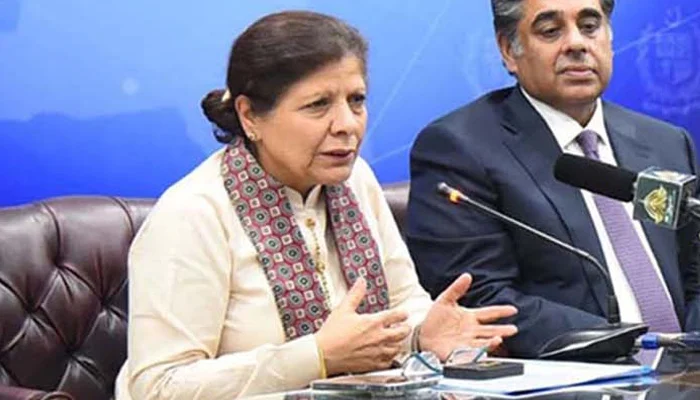- Govt focused on addressing Rs1 trillion revenue leakages.
- FBR identifies 5 major areas to fill expected revenue shortfall.
- Transit trade with Afghanistan causes smuggling of $2 to $3bn.
ISLAMABAD: Caretaker Finance Minister Dr Shamshad Akhtar has asked the Federal Board of Revenue (FBR) to share its strategy to close the expanding revenue gap and meet the fixed annual target.
According to a report by The News, the government is now focused on addressing significant revenue leakages worth Rs1 trillion to achieve the annual target of Rs9.4 trillion.
In a high-level meeting chaired by the minister, the identified areas for enforcement action included cracking down on smuggling. There was, however, no press release issued after the meeting concluded.
The government, as part of the International Monetary Fund (IMF) programme, cannot afford quarterly revenue shortfalls. Thus, it is crucial to address revenue leakages to meet the agreed targets by September 2023 and maintain fiscal responsibility.
Insiders say the FBR has identified five major areas for plugging leakages to the tune of Rs1 trillion at a time when the tax collection machinery might face a revenue shortfall in the wake of compressed imports.
However, when the nominal growth, especially the Consumer Price Index (CPI) and Sensitive Price Indicator (SPI)-based inflation, was witnessing historic peaks, why it was not translating into jumping up tax revenues?
The government did not prefer to take any additional revenue measures to fill the tax shortfall in the wake of the slowdown of the economy.
The FBR high-ups responded that five major areas could be plugged in order to fill the expected revenue shortfall in the months to come.
The FBR identified that withholding taxes were collected by withholding agents but it was not deposited into the tax kitty. “It is roughly estimated that effective monitoring of withholding taxes could jack up tax revenues by Rs150 to Rs200 billion in the current fiscal year,” said one official.
Another area identified by the FBR was related to tax evasion in the tobacco sector. The Track and Trace System is being installed on the premises of giant companies such as the Pakistan Tobacco Company (PTC), Philip Morris Pakistan (PMI), and Khyber Tobacco. Many other local manufacturers have now signed MoUs with the FBR but the Track and Trace is not fully operational.
An interesting aspect was that some local brands were selling their packs at the price of Rs100 despite the fact that the minimum tax per pack stood at Rs127.
The stamp of Track and Trace is also placed on the cigarette pack showing that massive tax evasion continues.
The FBR claims that an additional tax of Rs50 billion could be materialised from tobacco’s tax evasion through enforcement. The IPSOS report says that tax evasion eats away Rs240 billion from untaxed or illicit cigarettes on a per annum basis.
The third area identified by the FBR for increasing taxation was busting out of Sales Tax frauds.
The FBR’s Intelligence and Investigation (I&I) IRS traced the biggest fraud of fake invoicing in Karachi having close linkages in other parts of Punjab, especially Faisalabad, so the FBR considers that there was huge potential to plug leakages.
The fourth area was related to curbing the smuggling of dollars and other commodities through Afghanistan and Iran.
There are rough estimates that the transit trade with Afghanistan caused smuggling of $2 to $3 billion and huge quantities of smuggling also continued through Iran’s borders. So it needs to be plugged to jack up the tax revenues.
Valuation of imports has been identified as another area for boosting up revenue measures. Only in the case of China, Islamabad and Beijing had struck a trade data exchange agreement. The Chinese side shared the data in bulk but the Pakistani side was asking for sharing transaction-wise data in order to gauge the undervaluation of goods.
Proper valuation of goods imported from other countries could jack up tax collection substantially.
Now the FBR has been assigned to fine-tune these proposals and bridge the revenue gap expected to surface in achieving the annual tax collection target of Rs1,000 billion during the current fiscal year.

